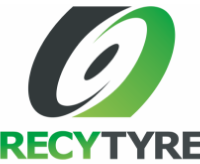Recycling, reuse, circular economy… all words we often hear today, but which we are less likely to associate with certain industries. Especially with the automotive industry. Just about everyone is won over by this commendable and absolutely necessary initiative. The idea of putting second-hand tyres on our car, for example, is going too far though. Because they are of inferior quality, right? However, rubber recycling in general is going to have a bright future.
Source: Fokus Online
Recycling our household waste has become a daily habit. But what about other waste? Waste that would have unimaginable consequences if our environment is exposed to it for too long? In this respect, rubber is a very typical example. This material is used in numerous everyday products, starting with the tyres of our car. We just don’t know what happens to it when it is worn out and unusable.
Chris Lorquet, CEO of the non-profit organisation Recytyre, explains: “Today, Belgium has to collect and process no less than 6 million used car tyres every year. So to avoid illegal dumping of car tyres, something that was very common before 2000, or all being burned, we need to recycle the rubber and reuse it as a secondary raw material in railway applications, insulation or vibration damping material, among others.” This may seem obvious, yet recycling car tyres is not that simple.
Recycle or reuse?
When a tyre is discarded, it does not mean that it – or its components – cannot get a second life. There are several ways to upgrade this product. Firstly, reuse. If the tyre is not worn out, it can be reintroduced to the market through specialised second-hand dealers. In the truck sector, we talk more about ‘retreading’. This involves replacing the worn tread as long as the tyre itself is still in good condition. Secondly, recycling, especially through granulation, of the material itself. And if these options are no longer possible, the car tyres can be incinerated to use the calorific value and thus save energy.
This raises questions about how car tyres are designed and what the possible options are to improve the material’s circularity.
Ecodesign and awareness-raising
Climate concerns are increasingly prompting designers to design their products differently. Recycling and reuse are approved and widely used techniques to reduce our ecological footprint. But the basis of ecodesign is indeed to extend the product’s lifespan and then come up with solutions to reuse that worn-out product.
Fortunately, interesting solutions are gradually being devised to design the tyres of tomorrow. Indestructible car tyres perhaps, or tyres that can be retreaded or even tyres that we can rent based on how many kilometres we travel per year. In short, a bright future for reusing worn-out rubber, but also many challenges ahead. Because, as Chris Lorquet explains, “Developing new ecologically designed solutions is a first big step. After that, we will have to come up with solutions to reuse our reclaimed materials and to collect the microplastics that tyres leave on the road or in the environment. Two big challenges that, I am sure, many designers are already working on enthusiastically today!”




